THE EXTRATROPICAL CYCLONE
Objectives:
The predominant storm system of the middle and higher latitudes are extratropical cyclones. They characterized by low-pressure centers, fronts, and variable weather conditions about those centers. The counterclockwise and inward circulation that characterizes surface winds in Northern Hemisphere cyclones brings contrasting air masses together to form fronts. Along those fronts clouds and precipitation may develop. As a cyclone travels along its track, the system typically progresses through a life cycle. Localities that come under the influence of a cyclone often experience sequential changes in weather. Understanding the types of weather associated with a typical extratropical cyclone aids in weather forecasting.
After completing this investigation, you should be able to:
- Describe the pattern of surface winds and weather in a model extratropical cyclone.
- Specify the type of weather associated with fronts that rotate about an extratropical cyclone’s low-pressure center.
- Compare and contrast the weather associated with cold fronts and warm fronts.
Introduction:
Figure 1 is a schematic of a Northern Hemisphere extratropical cyclone reaching maturity. North is to the top and East is to the right. Shown are the positions of the cold and warm fronts along with isobars drawn at intervals of 4 mb. Label the fronts with the appropriate symbols for a warm front and cold front. Draw arrows to show wind directions to the northeast, southeast, southwest, and northwest of the cyclone center.
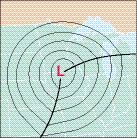
Figure 1. Schematic diagram of a Northern Hemisphere extratropical cyclone.
Refer to Figure 1 and what you have learned so far in this course when responding to the following:
1. Looking down on a Northern Hemisphere extratropical cyclone, surface winds blow [(clockwise and outward)(counterclockwise and inward)] about the center.
2. The specific track of an extratropical cyclone’s low-pressure center across Earth’s surface is largely determined by large-scale horizontal winds blowing [(near Earth’s surface)(in the middle and upper troposphere)].
3. As a cyclone advances, the system typically progresses through a life cycle. As a cyclone develops, the central pressure of the system [(rises)(falls)] and surface winds strengthen. At maturity, clouds cover a broad area about the low center and associated precipitation is widespread.
4. In the extratropical cyclone’s warm sector (the area between the warm front and the advancing cold front), surface winds are likely to be producing [(cold)(warm)] air advection.
5. To the north and west of the center of an extratropical cyclone, surface winds are likely to be producing [(cold)(warm)] air advection.
6. Dewpoints are likely to be relatively high to the [(southeast)(northwest)] of the cyclone’s center.
7. As the cyclone progresses across Earth’s surface, the cold and warm fronts rotate about the center of low pressure. The motion of the storm system has similarities to that of a flying Frisbee®, that is, a Frisbee spins as it sails through the air (simultaneously exhibiting rotational and translational motions). Typically, the cold front rotates about the center of the low faster than the warm front. Consequently, the extent of the warm sector occupied by relatively warm and humid air at the surface [(shrinks)(increases)].
8. Eventually the cold front catches up with and merges with the warm front forming an occluded front. At this stage in the life cycle of an extratropical cyclone (known as occlusion), the storm often begins to weaken as the central air pressure begins to [(fall)(rise)].
9. With the passage of a warm front, the air temperature usually rises and the dewpoint usually [(rises)(falls)].
10. With the passage of a cold front, the air temperature usually falls and the dewpoint usually [(rises)(falls)].
11. A shift in wind direction usually accompanies the passage of a front. With passage of the cold front, surface winds shift direction from the south to the [(southeast or east)(west or northwest)].
12. With passage of the warm front, surface winds shift direction from the east to the [(southeast or south)(west or northwest)].
13. Ahead of a surface warm front, warm and humid air rides up and over a wedge of cooler air (a process known as overrunning.) As the ascending warm air expands and cools, its relative humidity [(increases)(decreases)], and clouds typically form.
14. Most cloudiness associated with a warm front develops over a broad area, often hundreds of kilometers wide, [(ahead of)(behind)] the front. From these clouds, light to moderate precipitation may fall for 12 to 24 hours or longer.
15. As a cold air mass advances and a warm air mass retreats, the colder, denser air forces the warmer, lighter air to ascend either along or just ahead of the cold front. Uplift of warm air triggers cloud development and perhaps showery precipitation. In some instances, uplift is so vigorous that thunderstorms develop. Typically, the band of clouds and precipitation associated with a cold front is [(narrower)(wider)] than that associated with a warm front.
Figure 2 is a visible satellite image for 1815Z 15 OCT 2013. The frontal positions at that time have been added to the satellite view to characterize the structure of a mature extratropical cyclone in the east-central portion of the coterminous U.S.
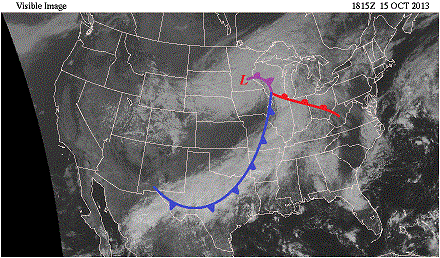
Figure 2. Visible satellite image for 1815Z 15 OCT 2013.
16. Around the low-pressure system, the visible image shows a broad white, comma shaped swirl of clouds. Consistent with the hand-twist model of a Low, an animation would show this swirl to be rotating [(clockwise)(counterclockwise)]. It is the circulation and rising motions of low-pressure systems that leads to the “comma” shape of cloudiness frequently seen in satellite images.
17. A broad, bright, white arc from Minnesota to Texas is composed of clouds producing widespread precipitation at image time. The arc of clouds across the southern half of the country forms the band spread ahead of the wave cyclone’s [(cold)(warm)] front.
18. A second broad band of cloudiness is stretched from Wisconsin to western Pennsylvania. This band was ahead of the storm system’s [(cold)(warm)] front.
While extratropical cyclones typically exhibit similar general characteristics, they do not all look alike or go through exactly the same life cycles as seen in this example. The mature stage of the extratropical cyclone seen in Figure 2 shows a developing occluded front. The occlusion process began leading to the cyclone’s eventual demise. The path of the low-pressure center was generally northeastward across the Great Lakes to the Canadian Maritime Provinces, a typical track for many storm systems over the U.S.
As directed by your course instructor, complete this investigation by either:
- Going to the Current Weather Studies link on the course website, or
- Continuing the Applications section for this investigation that immediately follows.
Investigation 10A: Applications
Figure 2 above is the visible satellite view of the storm system that developed to the east of the Rocky Mountains, moved across the upper Plains States where it matured and finally weakened as it moved into eastern Canada. This midlatitude cyclonic system generally followed the classic life cycle of a “wave cyclone”. In Investigation 6A we looked at the processes that produce clouds and precipitation as they occurred with this storm and in Investigation 7A we examined the precipitation patterns about the entire storm system.
19. Figure 3 is the surface weather map for 00Z 15 OCT 2013. This Figure 3 map was one day following the surface map of Investigation 6A. At this Figure 3 map time, the low-pressure system was centered in central Nebraska. The L had a lowest pressure of 1004 mb (underlined to the northwest of the L). A 1008-mb isobar showed a complex pressure area linked to another Low of 1007 mb in southern Kansas. From southern Kansas southwestward to Arizona, a [(cold)(warm)(stationary)] front was displayed. The end of that front in AZ and southern Nevada was shown to be stationary.
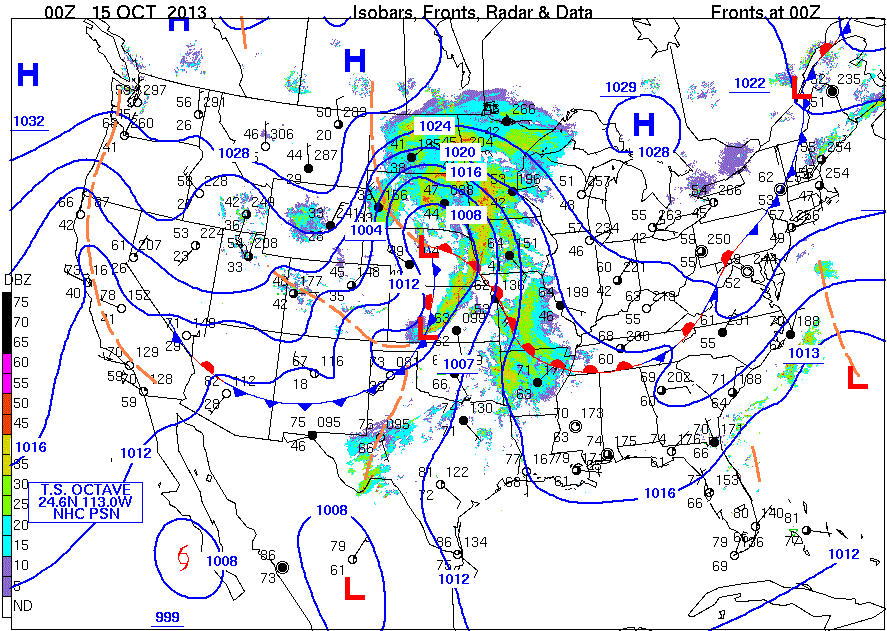
Figure 3. Surface weather map for 00Z 15 OCT 2013.
20. From the Nebraska L, a [(cold)(warm)(stationary)] front stretched generally southeastward to southern Tennessee. The frontal continuation curving northeastward toward Pennsylvania was stationary.
21. The wind pattern in the several state area around the system’s Low center area exhibited a generally [(clockwise and outward)(counterclockwise and inward)] flow as expected.
22. The wind direction at Wichita, KS, was generally from the [(south)(west)(north)(east)] as would be expected in the “warm sector”, between the advancing warm and cold fronts in a wave cyclone.
23. The wind direction at St. Louis, in eastern Missouri, was from the [(southwest)(northwest)(northeast)(southeast)] as would be expected preceding the warm front in a wave cyclone.
24. The wind direction at North Platte, in west-central Nebraska, was from the [(southwest)(northwest)(northeast)(southeast)] as would be expected following a cold front in a wave cyclone. (On this map, the front immediately to the east of North Platte was temporarily stalled making it a stationary front.)
25. Compare the temperatures and dewpoints at Wichita, KS with Denver, Colorado. The air was [(warmer and had greater)(cooler and had lower)] water vapor content behind the cold front.
26. Compare the dewpoints at Wichita, KS, with St. Louis, MO. The air had [(greater)(lower)] water vapor content in the warm sector between the cold and warm fronts than in advance of the warm front.
27. Figure 4 is the 500-mb upper-air map for 00Z 15 OCT 2013, the same time as the Figure 3 surface map. Place a bold “L” on the Figure 4, 500-mb map where the surface 1004-mb Low center of Figure 3 was shown. The center of the storm system at the surface, as marked by the L you drew, was located to the east side of an upper air [(ridge)(trough)] shown on the 500-mb map over the west-central U.S.
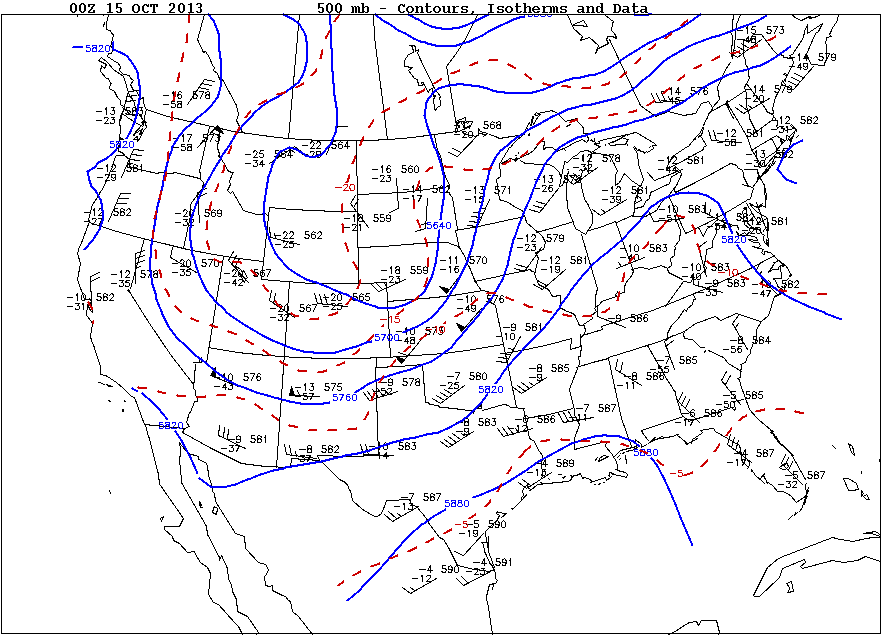
Figure 4. 500-mb map for 00Z 15 OCT 2013.
28. Wind directions at 500 mb over surface weather features are often a good indicator of the movements of those systems over the next day or so. Based on the wind directions at 500 mb as inferred by the station plots and contour lines over the area of the surface storm center, the system would be expected to move generally toward the [(northeast)(northwest)(southwest)(southeast)] over the next day.
29. Figure 5 is the infrared satellite image for 00Z 15 OCT 2013, the time of Figure 3 and 4. Bright white shadings indicated where the tops of cold high clouds existed. Mark the location of the NE surface L center on the satellite image. The curl pattern of the clouds about the L has a near-classic “comma” shape. These cloud formations [(would)(would not)] be likely due to lifting mechanisms of the surface fronts.
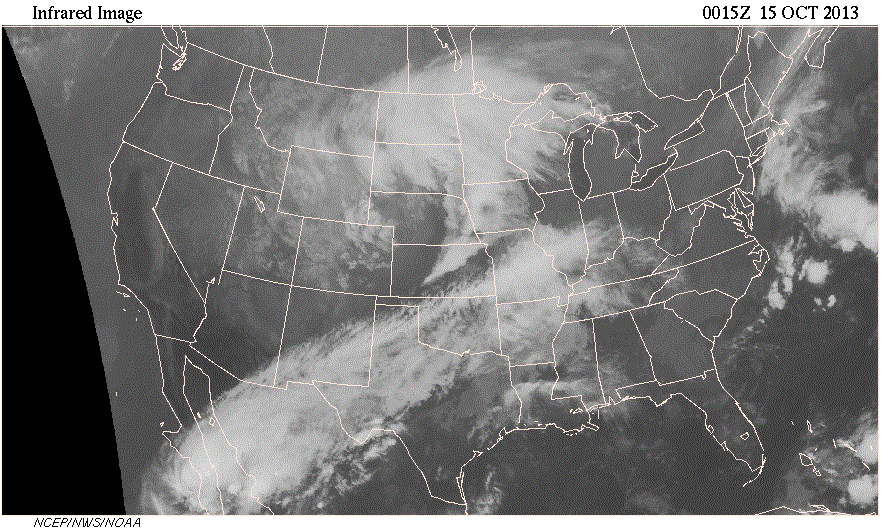
Figure 5. Infrared satellite image for 0015Z 15 OCT 2013.
30. High cold clouds tops on the satellite image [(did)(did not)] generally occur where the surface map showed precipitation to be falling as indicated by the radar echoes.
31. The surface map one-half day following these image times showed the surface low-pressure system to be occluded with the center along the South Dakota, Minnesota border. This is Figure 1 of Investigation 7A. Place a bold L there on the this Figure 3 map and mark it 12Z. The Low center [(did)(did not)] generally follow the direction of the middle-tropospheric (500 mb) wind directions in that region as seen on Figure 4.
32. The twenty-four hour total precipitation pattern ending at 12Z on the 16th of October, shown in Figure 4 of Investigation 7A, showed rain had fallen in a broad curved band from South Dakota, around to the Ohio River Valley and down across central Texas. Portions of central Texas received up to about 4 inches of rain in this period. This precipitation pattern [(would)(would not)] be consistent with an advancing wave cyclone’s path and atmospheric lifting mechanisms.
The NWS National Centers for Environmental Prediction (NCEP) also create surface maps for North America, the continental U.S., Alaska, Hawaii or sections of the country, in either black and white or color, with or without fronts, and/or with satellite or radar data. These maps can also be found from the “NWS Surface Analyses” link on the course website under Surface products. Also, one- and seven-day loops of frontal positions can be created showing the progression of surface weather features. The National Weather Service Unified Surface Analysis will even show (and animate) wave cyclones and Highs across most of the Northern Hemisphere. Take note of these the maps as increasingly intense cyclones form and move across the country with the progression of spring.
Suggestions for further activities: NOAA weather radio, “State Surface Data - Text” on the course website, or local instrument readings and media reports are ways you can keep track of changes in hourly weather conditions that accompany cyclones as these systems and their fronts approach and cross your location, particularly when severe weather threatens. You can record these hourly weather conditions on a blank meteogram, available from the course website, under Extras, “Blank Metgram”. Then you can compare these changing conditions with the general pattern expected from passing extra-tropical cyclones (recall Investigation 5A). NOAA Weather Radio is particularly valuable when severe weather threatens your area as most weather radios are equipped with warning alarms that can be triggered by the National Weather Service when conditions warrant.
Additional discussion of the extratropical cyclone can be found at: http://www.srh.noaa.gov/jetstream/synoptic/cyclone.htm (). Also, from the NWS Surface Analyses link on the course website (Surface section), you can create a 24-hour surface analysis loop showing the movement of weather systems by selecting a region and clicking “Display Loop”.